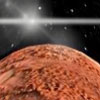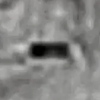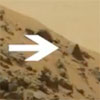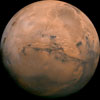Insects On Mars
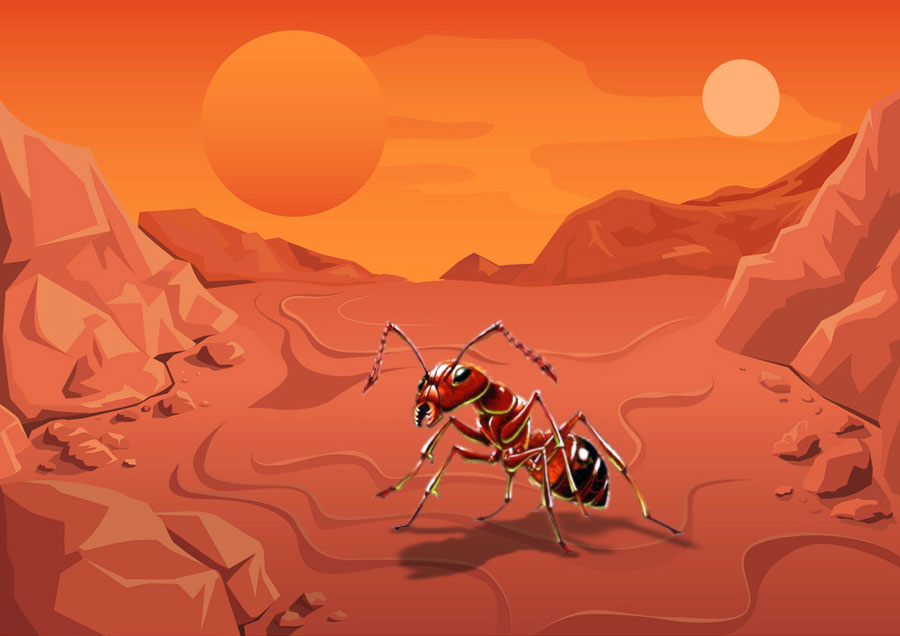 by Stacy Liberatore
by Stacy Liberatore
Ohio University professor claims insect-like beings are living on Mars after spending years studying photos from different missions to the Red Planet.
- Professor spent years investigating images from NASA taken of Mars
- Images were taken in different missions to the planet, with most from Curiosity
- He claims there is evidence of exoskeletons and jointed appendages of beings
- He also suggests that these beings are insect-like creatures living on Mars
NASA is getting ready to send a rover to Mars in search of life, but an insect expert from Ohio University believes we already have evidence of beings crawling on the Red Planet.
William S. Romoser, Ph.D, who has 45 years of experience studying insects, has also spent years analysing NASA photographs of the Martian world and claims there are numerous examples of insect-like forms.
The Emeritus Professor of Medical Entomology at Ohio University believes the images show exoskeletons and jointed appendages of these ‘living creatures’, and are enough evidence to identify these organisms as insect-like.
He also claims that in some of the images, the specimens appear to have turned in the direction of the camera.
‘There has been and still is life on Mars,’ said Romoser, noting the images appear to show both fossilized and living creatures.
‘There is apparent diversity among the Martian insect-like fauna which display many features similar to Terran insects that are interpreted as advanced groups — for example, the presence of wings, wing flexion, agile gliding/flight, and variously structured leg elements.’
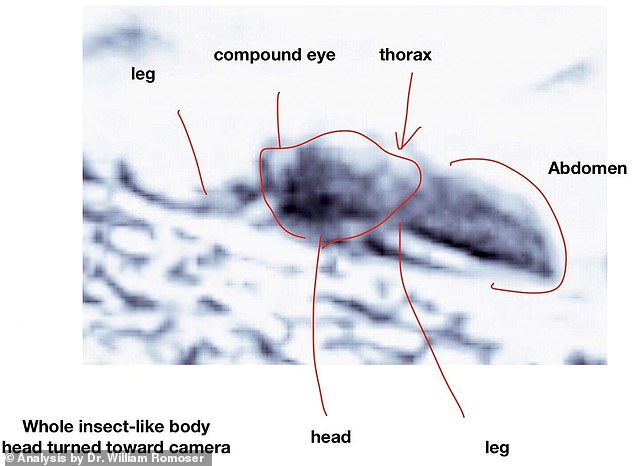 A specimen whose head appears to have turned in the direction of the camera, according to William S. Romoser, Ph.D. Based on the scale provided in the photo from which this was extracted, this individual is estimated to be approximately 20 inches long.
A specimen whose head appears to have turned in the direction of the camera, according to William S. Romoser, Ph.D. Based on the scale provided in the photo from which this was extracted, this individual is estimated to be approximately 20 inches long.
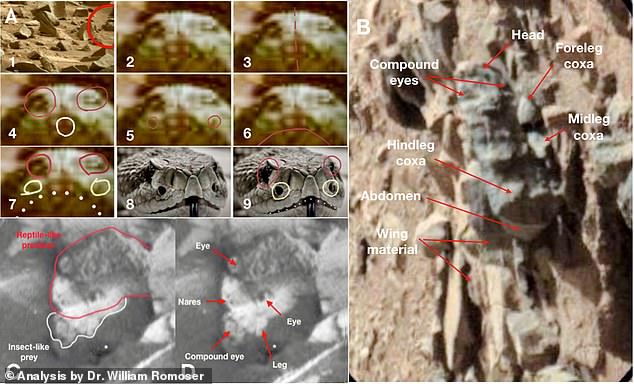 In a study put together by Romoser, he discussed ‘a putative reptile-like fossil compared to a Terran snake’. The fossil shows the snakes beady eyes, two front nostrils and even an insect in its mouth.
In a study put together by Romoser, he discussed ‘a putative reptile-like fossil compared to a Terran snake’. The fossil shows the snakes beady eyes, two front nostrils and even an insect in its mouth.
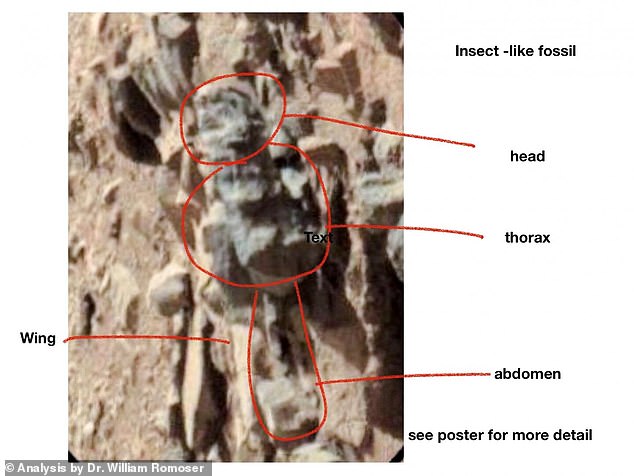 Dr. Emeritus William Romoser, is an Emeritus Professor of Medical Entomology at Ohio University and has spent years studying NASA photographs of the Martian world and claims there are numerous examples of insect-like forms. He claims the images highlight exoskeletons and jointed appendages of these ‘living creatures’, which are enough evidence to identify these organism as insect-like.
Dr. Emeritus William Romoser, is an Emeritus Professor of Medical Entomology at Ohio University and has spent years studying NASA photographs of the Martian world and claims there are numerous examples of insect-like forms. He claims the images highlight exoskeletons and jointed appendages of these ‘living creatures’, which are enough evidence to identify these organism as insect-like.
 He used the database from NASA Jet Propulsion Laboratory (JPL) of raw images and compiled panoramic mosaics, which had been gathered over many years from different missions to the Red Planet. The majority of them came from Nasa’s Curiosity rover.
He used the database from NASA Jet Propulsion Laboratory (JPL) of raw images and compiled panoramic mosaics, which had been gathered over many years from different missions to the Red Planet. The majority of them came from Nasa’s Curiosity rover.
Romoser explained that he investigated the ‘dramatic departure from the surroundings, clarity of form, body symmetry, segmentation of body parts, repeating form, skeletal remains, and observation of forms in close proximity to one another’.
He also said the posture, evidence of motion, flight, apparent interaction as suggested by relative positions, and shiny eyes were consistent with the presence of living forms.
‘Once a clear image of a given form was identified and described, it was useful in facilitating recognition of other less clear, but none-the-less valid, images of the same basic form,’ Romoser said.
‘An exoskeleton and jointed appendages are sufficient to establish identification as an arthropod.’
‘Three body regions, a single pair of antennae, and six legs are traditionally sufficient to establish identification as ‘insect’ on Earth.’
‘These characteristics should likewise be valid to identify an organism on Mars as insect-like. On these bases, arthropodan, insect-like forms can be seen in the Mars rover.
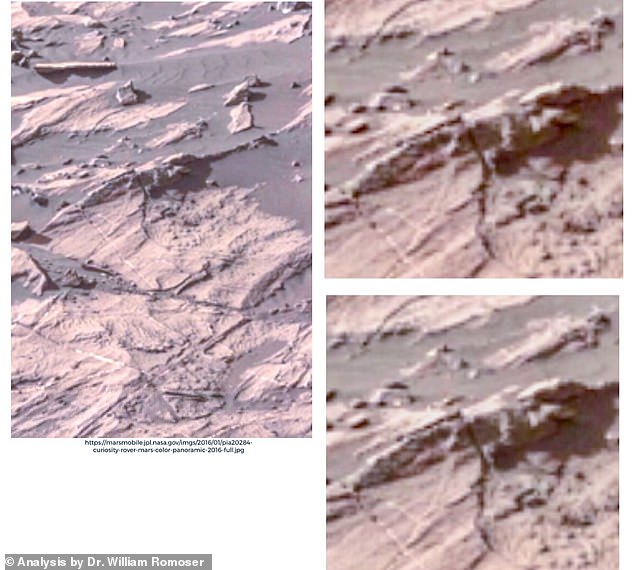 He used the database from NASA Jet Propulsion Laboratory (JPL) of raw images and compiled panoramic mosaics, which had been gathered over many years from different missions to the Red Planet as shown in the above image.
He used the database from NASA Jet Propulsion Laboratory (JPL) of raw images and compiled panoramic mosaics, which had been gathered over many years from different missions to the Red Planet as shown in the above image.
He found distinct flight behavior was seen in many of the images and the beings appear to look like the bumble bees or carpenter bees we have here on Earth. Other images, Romoser claimed, showed ‘bees’ in their nests and others highlighted fossilized creatures that resembles a snake.
Romoser, who was an entomology professor at Ohio University for 45 years and co-founded its Tropical Disease Institute, spent nearly 20 years as a visiting vector-borne disease researcher at the U.S. Army Medical Research Institute of Infectious Diseases.
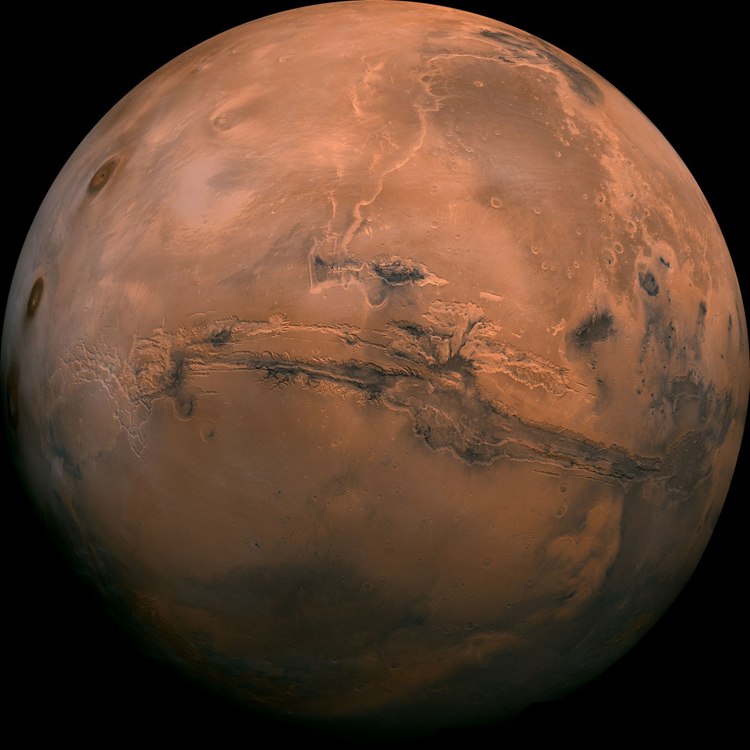 NASA is getting ready to send a rover to Mars in search of life, but a professor from Ohio University believes we already have evidence of beings crawling on the red planet.
NASA is getting ready to send a rover to Mars in search of life, but a professor from Ohio University believes we already have evidence of beings crawling on the red planet.
From 1973 through 1998, he authored and co-authored four editions of the widely-used textbook, ‘The Science of Entomology.’
Romoser noted that interpretations of insect- and reptile-like creatures he described may change in the future as knowledge of life on Mars evolves, but that the sheer volume of evidence is compelling.
‘The presence of higher metazoan organisms on Mars implies the presence of nutrient/energy sources and processes, food chains and webs, and water as elements functioning in a viable, if extreme, ecological setting sufficient to sustain life,’ he said.
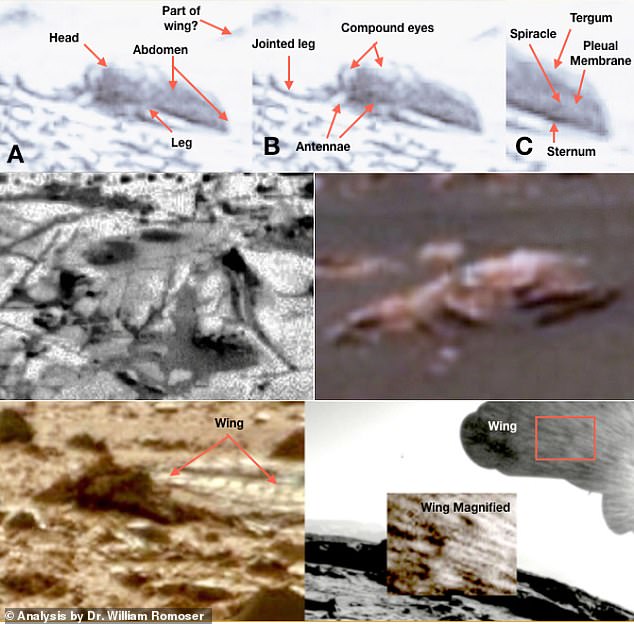 Other images, Romoser claimed, showed ‘bees’ in their nests and others highlighted fossilized creatures that resembles a snake.
Other images, Romoser claimed, showed ‘bees’ in their nests and others highlighted fossilized creatures that resembles a snake.
‘I have observed instances suggestive of standing water or small water courses with evident meander and with the expected blurring of small submerged rocks, larger emergent rocks at the atmosphere/water interface, a moist bank area, and a drier area beyond the moist area.’
‘Water on Mars has been reported a number of times, including surface water detected by instrumentation on Viking, Pathfinder, Phoenix, and Curiosity.
“The evidence of life on Mars presented here provides a strong basis for many additional important biological as well as social and political questions,” he added. It also represents a solid justification for further study.
This area was home to a lake 3.5 billion years ago and is littered with carbonates and hydrated silica.
Carbonates located in the crater’s inner rim have been found to survive in fossils on Earth for billions of years and hydrated silica was discovered in the delta that is known for its ability to preserve biosignatures.
The Mars 2020 mission will solely focus on astrobiology, or ‘the study of life throughout the universe’, NASA shared in a statement.
The future mission is tasked with searching for actual signs of past microbial life and will gather rock core samples in metal tubes that will make their way back to Earth to be studied further.
Nasa’s Mars 2020 rover will search for signs of ancient life on Mars in a bid to help scientists better understand how life evolved on our own planet.
The machine will explore an ancient river delta within the Jezero Crater, which was once filled with a 1,600-foot (500-meter) deep lake.
It is believed that the region hosted microbial life some 3.5 to 3.9 billion years ago.
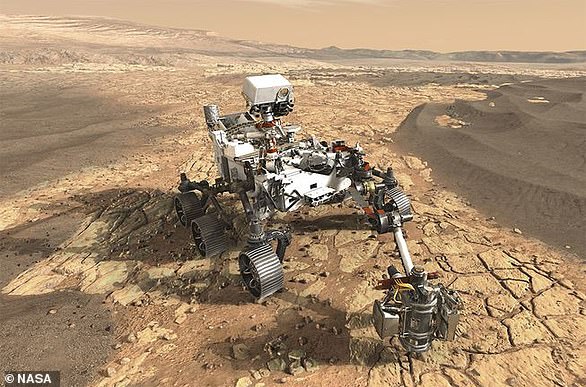 Nasa’s Mars 2020 rover (artist’s impression).
Nasa’s Mars 2020 rover (artist’s impression).
The $2.5 billion (£1.95 billion) Mars 2020 is planned to launch in July 2020, and land in February 2021.
Mars 2020 is designed to land inside the crater and collect samples that will eventually be returned to Earth for further analysis.
Nasa says a second mission will need to fly to the planet and return the samples, perhaps by the later 2020s.
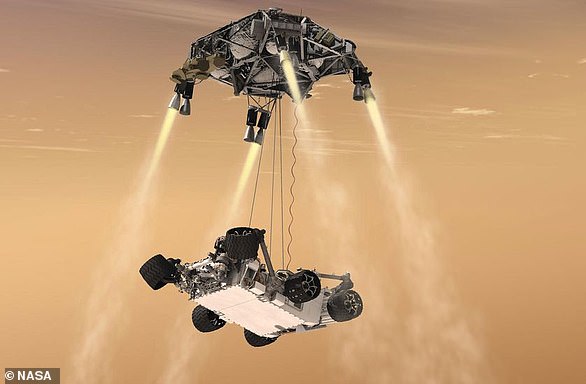 This concept art shows the Mars 2020 rover landing on the red planet via NASA’s ‘sky-crane’ system.
This concept art shows the Mars 2020 rover landing on the red planet via NASA’s ‘sky-crane’ system.
Posted in Life On Other Worlds, Other Topics, The Truth About Marswith comments disabled.


